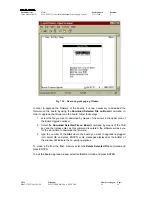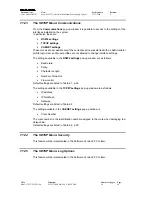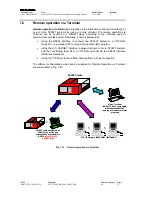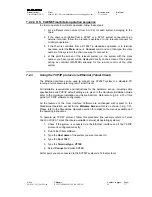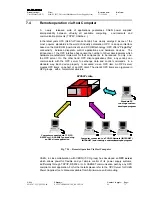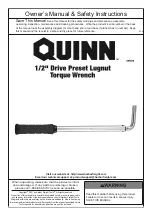
Document type:
Title:
Revision date:
Revision:
User's Manual (MUT)
Mod. SY2527, Universal Multichannel Power Supply System
27/11/2000
0
NPO:
Filename:
Number of pages:
Page:
00103/97:2527y.MUTx/00
SY2527USERMANUAL_REV0.DOC
84
72
•
with a SY2527 system operating in standalone configuration or in terminal
operation via RS232 or Telnet;
•
with a SY527 system connected to a VT100-like terminal via the commands
specific of the SY527 system; actually, if an external VT100 is connected to the
SY527 system, the usual
SY2527 Software User Interface
will be displayed.
•
with a SY127 system equipped with a A128HS board and connected to a VT100-
like terminal via the commands specific of the SY127 system; actually, if an
external VT100 is connected to the SY527 system, the usual
SY2527 Software
User Interface
will be displayed.
Please refer to the Standalone Operation section for details on the menus available and
the operating instructions.
7.2.2.1 H.S. CAENET protocol
The H. S. CAENET is based on a send and receive half duplex protocol. It allows
asynchronous serial transmission (1 MBaud rate) of data packets along a simple 50
Ω
coaxial cable. Several devices (H. S. CAENET nodes) are able to share the same media
to transmit and receive data. Each node is able to receive the serial data packet, to store
it automatically in a FIFO (RX FIFO) and transmit the data contained in another FIFO
(TX FIFO). Both FIFOs are 512-byte deep.
Usually, the transfers between H. S. CAENET nodes take place according to the typical
Master/Slaves communication. This means that:
•
there is a single Master (the H. S. CAENET Controller);
•
the Slaves are daisy-chained on the network, and are identified by an address
code (Crate Number);
•
the H. S. CAENET Master starts the transmission, all the Slaves receive the
data and only the addressed Slave accesses the serial line to transmit the data
requested by the Master;
•
the maximum data packet length is 512 bytes.
7.2.2.2 H.S. CAENET node address
The address of the H. S. CAENET node (Crate Number) is selectable via software
(Connect command), and its value ranges from 0 to 99. In this way up to 100 crates may
be controlled from a single system.
7.2.2.3 H.S. CAENET network termination
In order to avoid reflections it is necessary to terminate the H. S. CAENET line on a
50
Ω
impedance. This is accomplished as follows:
•
If the H.S. CAENET Controller is one of the crates, insert a 50
Ω
impedance
terminator in one of the two 00 type LEMO connectors (CAENET) in the last and
in the first crate of the chain.
•
If the H.S. CAENET Controller is a standard PC equipped with the A303 H. S.
CAENET IBM
/PC Controller, insert a 50
Ω
impedance terminator in one of the
two 00 type LEMO connectors (CAENET) of the last crate of the chain.







